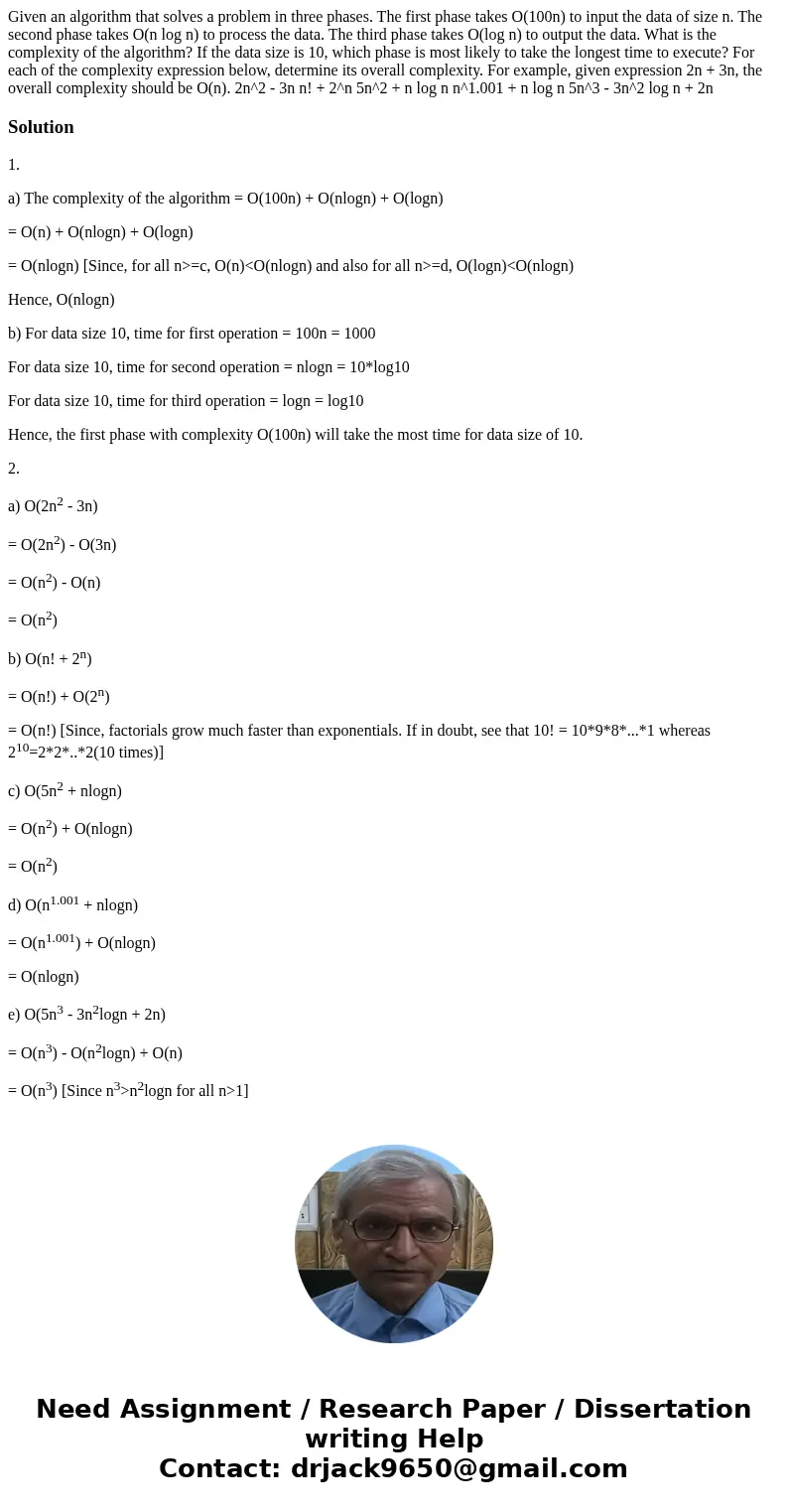Given an algorithm that solves a problem in three phases The
Solution
1.
a) The complexity of the algorithm = O(100n) + O(nlogn) + O(logn)
= O(n) + O(nlogn) + O(logn)
= O(nlogn) [Since, for all n>=c, O(n)<O(nlogn) and also for all n>=d, O(logn)<O(nlogn)
Hence, O(nlogn)
b) For data size 10, time for first operation = 100n = 1000
For data size 10, time for second operation = nlogn = 10*log10
For data size 10, time for third operation = logn = log10
Hence, the first phase with complexity O(100n) will take the most time for data size of 10.
2.
a) O(2n2 - 3n)
= O(2n2) - O(3n)
= O(n2) - O(n)
= O(n2)
b) O(n! + 2n)
= O(n!) + O(2n)
= O(n!) [Since, factorials grow much faster than exponentials. If in doubt, see that 10! = 10*9*8*...*1 whereas 210=2*2*..*2(10 times)]
c) O(5n2 + nlogn)
= O(n2) + O(nlogn)
= O(n2)
d) O(n1.001 + nlogn)
= O(n1.001) + O(nlogn)
= O(nlogn)
e) O(5n3 - 3n2logn + 2n)
= O(n3) - O(n2logn) + O(n)
= O(n3) [Since n3>n2logn for all n>1]

 Homework Sourse
Homework Sourse